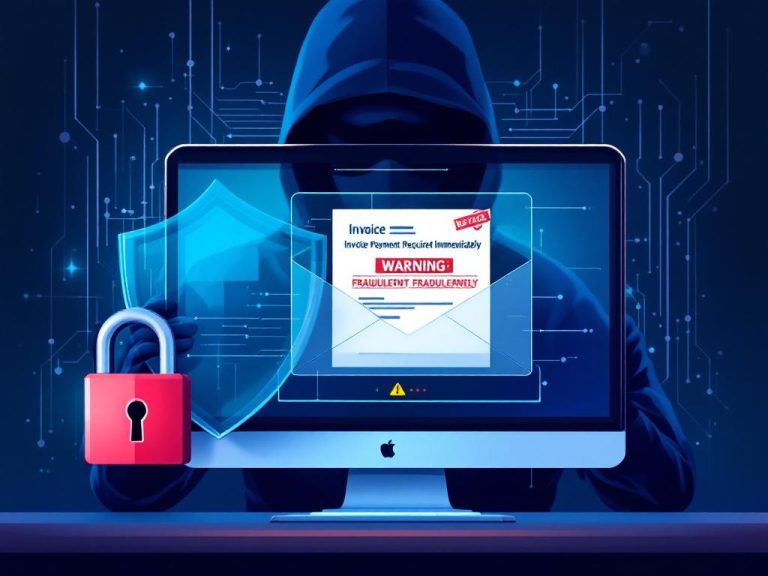Deepfakes are no longer a thing of the future—they’ve arrived in the heart of our everyday lives. While AI tools were once used primarily for fun, such as inserting celebrities into funny clips, the possibilities have evolved dramatically in 2025. Voices now sound almost identical to the real thing, and fake videos have become so realistic that even trained eyes often have to look twice.
However, this development has a dark side: Cybercriminals are deliberately using the technology for fraud. Fake voices are used to deceive unsuspecting people over the phone, while deceptively real videos cause chaos in the business world – for example, when the “boss” supposedly orders urgent transfers via video call.
What’s particularly dangerous about deepfakes is that they undermine your basic trust. In everyday life, you rely on what you see and hear – but when your voice and face are no longer valid as evidence, you enter a whole new dimension of social engineering.
In this article, you’ll learn how deepfake fraud works today, which scams will be circulating in 2025, and how you can still identify fake voices and videos. You’ll also receive practical tips on how to reliably protect yourself and those around you.
What is deepfake fraud?
The term “deepfake” is a combination of “deep learning” – a special machine learning method – and “fake.” It refers to media content that is subsequently falsified or completely artificially created using artificial intelligence. This includes manipulated voices, images, and videos that appear so real that they are almost indistinguishable from the original.
In deepfake fraud, criminals deliberately exploit this technology to deceive people and abuse their trust. The goal is almost always the same: to steal money or sensitive data. The perpetrators rely on psychological tricks such as urgency (“It has to happen immediately!”) or authority (“This is an order from the boss!”).
While previous scams – such as classic phishing emails or SMS – were often full of typos and easy to detect, deepfakes have reached a completely new level:
-
A deceptively real voice on the phone that sounds like your boss, your partner, or even your child.
-
A seemingly authentic video call in which the person’s face appears familiar, even though it was generated by an AI.
-
Audio messages sent on WhatsApp or Telegram that give the impression that a family member is in trouble.
This form of fraud is so dangerous because it not only circumvents technical protections but also attacks your basic perception: You believe what you hear and see. But it’s precisely this trust that deepfakes deliberately undermine.
Examples from 2025
Numerous cases in recent months demonstrate that deepfakes are no longer a rarity. Fraudsters are becoming increasingly sophisticated and are using the technology in various areas:
1. CEO fraud with AI voice
In Europe, a medium-sized company fell victim to a spectacular case: The CFO received an urgent video call from his managing director. The voice sounded absolutely authentic, the face in the video seemed deceptively real – even the facial expressions and gestures were accurate. During the call, he was instructed to immediately transfer several million euros to a foreign account to secure a supposed “strategic investment.”
Only later did it emerge that neither the managing director had made the call nor did the project exist. The voice and face were entirely AI-generated. The damage was immense – and a wake-up call for the entire industry.
2. False family emergency calls
Private individuals are also increasingly being targeted. One particularly perfidious example: Parents receive a call in which what they claim is their daughter’s voice is frantically pleading for help. “I’ve had an accident, please transfer money immediately, otherwise…” – the voice sounds so familiar that there’s little doubt. In fact, it’s a perfectly imitated voice recording created by scammers using short audio samples from social media.
Such “emergency scams” via WhatsApp or telephone will increase significantly in 2025 because they directly appeal to victims’ emotions.
3. Political manipulation
Deepfakes are even more explosive in the political sphere. Fake videos of politicians or well-known influencers spread rapidly on social networks. They depict alleged statements, scandals, or actions – and even if they are subsequently debunked, the damage often remains.
For example, a fake video of a well-known EU politician caused a stir because he allegedly made a radical statement. Although the video was quickly exposed as a deepfake, it had already circulated thousands of times and shattered the trust of many people.
How to recognize deepfakes
Even though deepfake technologies appear impressively realistic in 2025, there are still some characteristics that should raise your eyebrows. With a little attention and a critical eye, many manipulations can be exposed:
1. Unnatural movements
In videos, it’s often the small details that are revealing. Pay attention to facial expressions and gestures: Do lip movements really match what’s being said exactly? Or does the mouth sometimes seem slightly out of sync? The eyes are also a good indicator – if they blink irregularly or not at all, caution is advised. Some deepfakes also show strange movement patterns in the hands or in the background.
2. Sound quality and emphasis
Fake voices now sound almost deceptively real, but they often have subtle weaknesses. Listen carefully: Does the intonation seem too uniform or lacks emotional depth? People rarely speak completely flawlessly—there are small pauses, laughter, throat clearing, or breaths. If all of these nuances are missing or sound too artificial, it could be a sign of a deepfake.
3. Inconsistencies in the conversation
The content of the conversation itself is a strong warning sign. Does your supposed boss suddenly ask for an unusual transfer? Or does a “relative” unexpectedly request money for an emergency without you having heard anything about it beforehand? Scammers deliberately use pressure (“This has to be done immediately!”) to avoid giving you time to think. If a person seems unusually demanding, it’s worth pausing for a moment.
4. Technical anomalies
Even if the quality is high in 2025, AI generation isn’t flawless. Watch out for flickering shadows, unnatural light reflections, jerky movements, or unclean transitions. Deepfakes sometimes stutter, especially with fast movements and complex backgrounds. Even small image errors can be a clue that you’re not dealing with a real video.
5. Check the second channel
The safest course is always reassurance. If in doubt, call the person back using a phone number you know, send a separate email, or arrange a face-to-face meeting. A real colleague, boss, or family member will understand if you want to confirm their identity. On the contrary, they will be glad you’re acting so vigilantly.
How to protect yourself
Deepfakes are a serious threat, but with proper preparation, you can significantly reduce the risk. A combination of knowledge, technology, and common sense caution is key . These measures can help:
1. Raising awareness and education
The most important protection is that you—and those around you—know what scams are out there. Regularly inform yourself about current fraud cases and talk to family, friends, or colleagues about them. Often, even a small warning is enough to make someone suspicious in an emergency. Older people who have less experience with new technologies are particularly at risk—it’s worth actively educating them.
2. Clear internal rules within the company
Companies, in particular, are attractive targets for deepfake fraud. Therefore, clear processes for payments, approvals, and communication should be established. For example, transfers above a certain amount always require two people to approve them. Or, video calls are not an official channel for payment instructions. Such rules may seem strict, but they prevent enormous damage.
3. Use of two- or multi-factor authentication
Whether in your personal or business life, you should use additional security checks wherever possible. This could be a TAN procedure for transfers, confirmation via an app, or a second call to a known number. Even if fraudsters can fake a voice or video, they have no access to your second security factor.
4. Technical support through tools
The cybersecurity industry has long since responded. Initial AI-based systems can analyze deepfakes and detect suspicious patterns—such as unnatural facial movements or acoustic anomalies in voices. While these tools are not yet infallible, they can provide companies with an important additional layer of protection. Traditional security software that filters phishing emails also remains important.
5. Keep calm and remain critical
Perhaps the most important measure: Don’t let yourself be pressured. Almost all scams rely on stress and urgency. If someone says, “This needs to be done immediately!”, be skeptical. Take a deep breath, check the facts, and if in doubt, get a second opinion. A quick call back or follow-up question can save you a lot of money and stress in an emergency.
Additional tip: Many experts recommend a personal “security code word” within the family or team. This word will be requested in an emergency – and is almost impossible for outsiders to fake.
Conclusion: How to detect and prevent deepfake calls
Deepfake fraud is a serious threat in 2025 – both in private life and in businesses. But even if AI-assisted voices and videos appear deceptively real, there are clear signs you can look out for: unnatural movements, a lack of emotion in the voice, content inconsistencies, or technical anomalies.
The most important thing is to stay calm and remain critical . Don’t let yourself be pressured and check every unusual request through a second, secure communication channel. Use security policies, two-factor authentication, and, where possible, technical detection tools.
This way, you can detect and prevent deepfake calls in a timely manner – and protect yourself from financial and emotional damage.





